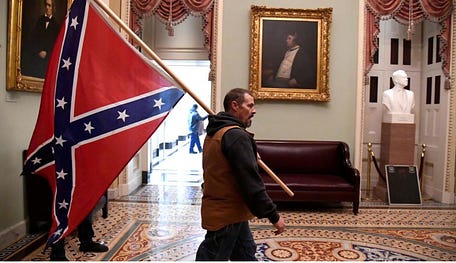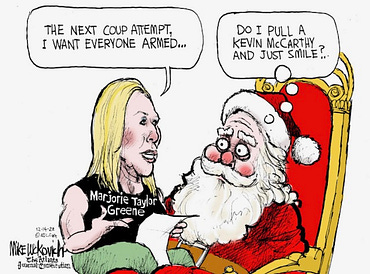Monday’s Mayoral Press Conference
As we descend into subzero temperatures this week, Mayor Woodward on Monday held a press conference flanked by Spokane Police Chief Craig Meidl, Spokane County Sheriff-elect John Nowels, and Spokane County Commissioner Mary Kuney. The next morning Dan Simonson’s listserv, [ShelterSpokane], featuring all the articles he could find on homelessness from the last 24 hours. (Sign up to receive the [ShelterSpokane] listserv emails by emailing <dsimonson@mac.com>. It is a great way to keep up with this issue.)
The Mayor’s press conference was covered by the Spokesman, KHQ, and KXLY. The three article titles are listed below with the full text of each article following in the same order. Reading them one after the other, all of them descriptions of the same press conference, is an education in how people can see and hear the same event differently. The differing accounts remind me of the parable of the blind men and an elephant. Each blind man, having touched a different part of the animal, comes away with a different idea of what an elephant is.
Even more telling is this: In the Spokesman the reporter does not choose the title for the print version of the article. Emry Dinman’s “Cold snap could leave unhoused vulnerable” becomes, in the print version renamed by the editor, “With bitter cold on the way, Spokane city, county leaders say hands are tied on Camp Hope”. The digital version title evokes sympathy and concern while the paper version’s title sets the reader up to read the article as a discourse on the political conflict over the fate of Camp Hope.
There are a couple of lessons here. First, to hope to understand what happened one needs to read or listen to more than one news source. Second, everyone has a filter, a filter that is conditioned by the experience of a lifetime. If you want the complete picture you need to view the press conference yourself. Sadly in this era of digital media, despite a lot of searching I was unable to find a video of the event. (If any of my readers finds one, please send me the link by “Reply” email.)
My particular take home messages from all this coverage (seen through myfilter):
- Mayor Woodward continues to appear more interested in getting Camp Hope dismantled and out of the public eye than she is in making sure homeless people don’t freeze. In the midst of a cold snap—and still with inadequate numbers of beds in her city system to accommodate all those at Camp Hope, she wants to blame the temporary restraining order issued by a federal judge for limiting her option to forcibly close the camp.
- Sheriff-elect John Nowels, at least at first blush, comes off as less combative than out-going Sheriff Knezovich. He at least acknowledges that the “outreach” performed by a battalion of law enforcement officers carried out at Camp Hope may only have succeeded at “upsetting some people”. Still, he wishes to blame their reception “on calls for camp residents not to interact with police”. Many or most of Camp Hope’s residents have experienced law enforcement “sweeps” of homeless camps. What prevents him from understanding that “outreaching” law enforcement officers bearing papers saying the camp will be closed might be perceived as threatening, and that non-engagement might be the best course for all concerned?
- Woodward remains severely math-challenged. She says there were 332 people at the Trent Shelter (TRAC) last weekend, and “we are prepared to go to 350 and beyond”. Camp Hope was still home to at least 377 souls—and all their belongings. How do you fit 377 people and all their belongings in 18 beds—or even in the “beyond” that Ms. Woodward hand-waves into existence? The space has only recently been approved by city departments for 350 “guests”. There is something wrong with her blaming a federal judge for blocking her option of forcibly closing Camp Hope when the city has no place for them to go.
- With no physically realistic place to go, for the people of Camp Home the threat of losing digits or a life in the subzero temperatures this very evening is better addressed by reaching people where they are—as Julie Garcia of Jewels Helping Hands is actually doing—providing space heaters (see the end of the KHQ article). Meanwhile, Mayor Woodward holds press conferences…
Keep to the high ground,
Jerry
The Spokesman-Review
Cold snap could leave unhoused vulnerable
KHQ
Spokane officials address homelessness crisis, shelter system as a cold snap settles in
KXLY
Spokane officials provide update on Camp Hope developments
####################################################
By Emry Dinman
THE SPOKESMAN-REVIEW
The week ahead is expected to be exceptionally cold, with Thursday’s temperatures forecast to drop below zero, and as hundreds of unhoused people in Spokane remain sleeping outside.
At a news conference about Camp Hope, Spokane Mayor Nadine Woodward speaks to the media in front of Spokane County Commissioner Mary Kuney, left, Spokane Police Chief Craig Meidl and Spokane County Sheriff-elect John Nowels on Monday at Spokane City Hall.
During a Monday press conference alongside Spokane County Commissioner Mary Kuney, Spokane Police Chief Craig Meidl and Spokane County Sheriff- elect John Nowels, Spokane Mayor Nadine Woodward told reporters that ongoing legal battles in federal court had limited the options available to quickly move people out of Camp Hope, the city’s large and controversial homeless encampment.
A recent restraining order issued by a federal judge temporarily barred a sweep of the camp or widespread arrests without individual probable cause. The next hearing in that case is scheduled for Dec. 28.
Though Woodward said this order had stymied efforts to quickly close the camp, she reiterated that she wanted to get people out of the cold and assured residents and businesses around Camp Hope that they had not been abandoned.
“Families, business owners, employees, students and school staff have endured a great impact and we have to remain solution focused,” Woodward said.
She emphasized that local hospitals are full, and with dangerously low temperatures forecast for the week ahead, Woodward said that it is imperative for the homeless to utilize local shelter services. She also called on service providers currently working with Camp Hope residents to extend their assistance to the Trent Resource and Assistance Center, the largest component of the region’s homeless shelter system.
However, there are not enough shelter beds available now or in the near future to house all of the homeless at Camp Hope, either at the Trent shelter or elsewhere. As of Monday night, there were 91 shelter beds available throughout the Spokane system, according to sheltermespokane.org, far less than what would be required to house those staying at Camp Hope, let alone all homeless Spokane residents.
The Trent shelter is currently permitted to hold 350 people, not including up to 25 staff members, according to reporting by Range media. Woodward insisted Monday that the capacity of the Trent shelter could be “flexed” up to 450 beds and that the city doesn’t want to turn anyone away, but added that the Salvation Army, which manages the shelter, does not currently have the staffing to safely do so.
“That’s what we’re working on,” Woodward said.
But Woodward, Kuney, Meidl and Nowels largely avoided addressingn the lack of shelter space Monday, short of calling for the state to provide more funds. Instead, they blamed ongoing court battles for “limiting our ability … to move people into a warm place.”
The restraining order, issued Dec. 12 by U.S. District Court Judge Stanley A. Bastian, restricts local law enforcement from forcibly evicting residents, arresting them without individual probably cause or using infrared technology to surveil the camp.
The order came days after at least a dozen law enforcement officers from the Spokane Sheriff’s Office, Spokane Valley Police Department and Spokane Police Department arrived at the camp unannounced on Dec. 6 and handed out leaflets stating “this camp is to be closed.”
The leaflets, which officers and deputies handed out again on Dec. 7, also provided some information for homeless services, though camp organizers said the information was already widely available and the leaflets contained inaccurate information.
Though law enforcement have stated that the outreach was intended to connect residents with services, camp organizers and residents called the exercise little more than an attempt to intimidate. They pointed to the number of law enforcement personnel, as well as the warning of impending closure.
Nowels disputed that characterization, saying that law enforcement conducted themselves professionally and only arrived in large numbers for their own safety.
Though Nowels said Monday that he was unsure if the outreach had any effect “other than upsetting some people,” which he blamed on calls for camp residents not to interact with police, he said the outreach would have continued if not for the judge’s order. Though the restraining order makes no mention of barring further outreach, Nowels said he did not expect the sheriff’s office to do so again during the current legal battles.
But Nowels insisted that traditional law enforcement action will continue at and around Camp Hope.
“We need the citizens and businesses who live and work in that area to know that we hear them and that we’re going to do everything in our power to help address the crime that is unfortunately occurring surrounding that camp,” he said.
According to Meidl, crime has surged in the quarter-mile around the camp since it opened last December, up 79% compared so far this year when compared with 2021, or 62% when compared to a three-year average.
In response to the increase in crime several months ago, the police department stationed two officers outside the camp to be a visible deterrent and to respond to calls.
Meidl said this presence has cost city taxpayers $400,000 in overtime, despite concerns raised by city leaders that overtime costs have been out of control. When asked whether those officers had lowered local crime rates, Meidl did not have clear answers.
“What I’m hearing is that, instead of having a lot of the individuals who like to like to bring drugs and other things into that camp, it’s pushed them a little bit further out into the neighborhoods,” Meidl said. “So we’re still having an issue with crime.”
Julie Garcia, founder of the organization Jewels Helping Hands which manages Camp Hope, said that she doesn’t believe the increase in crime in the area has been caused by residents of Camp Hope.
She claimed that the residents of Camp Hope are closely monitored to prevent criminal activity. Instead, she said that there are a number of other homeless encampments in the area, and blamed a rise in crime on those camps.
Local law enforcement officials have accused Camp Hope organizers of refusing to cooperate with police, including by interfering during the “outreach” activities earlier this month by warning campers to stay in their tents and not interact with officers or deputies.
Garcia has conversely accused local law enforcement of declining to arrest troublemakers in the camp and dragging their feet when called on for help.
During Monday’s press conference, Nowels stated that local law enforcement has recently made several arrests of people in possession of firearms, stolen vehicles and large quantities of fentanyl.
Garcia stated she believed she knew of a single individual who had been arrested that fit Nowel’s description, but argued that camp organizers had been trying unsuccessfully to get law enforcement to trespass him for nine months.
“We have continually asked for assistance,” Garcia said. “We try to do everything we can to get law enforcement involved when we know of any crime happening inside the camp.” Emry Dinman can be reached at (509) 459-5472 or by email at emryd@spokesman.com.
Julie Garcia – Founder of Jewels Helping Hands
####################################################
KHQ
Woodward acknowledged conditions at the shelter should have been better from the start. “We’ve made some mistakes, I’ll just tell you that. We’ve learned,” she said.
SPOKANE, Wash. – At a briefing on Monday afternoon at the Emergency Operations Center—the Spokane region’s response to Camp Hope—officials touted improvements to the Trent Resource and Assistance Center (TRAC). They also discussed the outreach efforts to camp residents by Spokane police officers, Spokane County Sheriff’s Office deputies, and members of the Spokane Regional Behavioral Health Unit (BHU). It’s the first briefing they’ve held on the matter in nearly a month.
“As we speak, updates are being made to TRAC,” Mayor Woodward said.
Woodward stated the updates will include building 350 better-quality beds with privacy screens, adding another shower trailer, office space, and storage units.
Those beds are being built by a team of more than 100 community volunteers, with hopes to have them ready at TRAC by the end of the week, according to the city.
Woodward acknowledged conditions at the shelter should have been better from the start.
“We’ve made some mistakes, I’ll just tell you that. We’ve learned,” she said. “We’ve never had a facility like this that can accommodate this number of people, ever. It’s all about getting people the help that they need and to move them along in their journey out of homelessness.”
Sheriff-elect John Nowels praised deputies, officers, and the BHU for their outreach efforts at the camp two weeks ago, playing body-cam video from inside the camp to show interactions between law enforcement and camp residents, stating it disputes claims by those who called their resource flier hand-out intimidating to residents.
“Their actions were everything but what was just described,” Nowels said.
Despite that, the temporary restraining order signed by a judge last weekprevents officers and deputies from going into the camp unless they have probable cause for an arrest.
“The temporary restraining order does not preclude us from doing that [making arrests], nor should it,” Nowels said. “I think everybody agrees that we need to keep the community safe, but we also need to keep the law-abiding and innocent people living inside that camp safe as well, and we will do that.”
To that end, Spokane Police Chief Craig Meidl said there has been a 79% spike in crime in the quarter-mile radius around the camp from the beginning of the year through the end of November.
“When you look at violent crime in the city, 2% year-to-date [increase] compared to last year,” Meidl said. “When you’re looking at property crime across the city, you’re looking at a 19% [increase]. So, the numbers surrounding that camp within a quarter-mile are up exponentially more than the rest of the city.”
Woodward said they’ve continued to have weekly conversations with the Washington State Department of Commerce, Washington State Department of Transportation, and Empire Health Foundation. Both Woodward and Nowels described those conversations as recently centered on repairing and rebuilding relationships to find a way forward.
With bitter cold temperatures expected this week, both the City of Spokane and service providers at the camp are preparing for the cold snap.
Woodward said at this afternoon’s briefing that 332 people stayed at TRAC over the weekend and emphasized that no one was turned away by staff.
TRAC is the crux of the city’s inclement weather policy—whether with extreme heat, extreme cold, or smoke.
Last year, the city opened up an emergency warming shelter at the Spokane Convention Center, but Woodward says that’s not on the table right now.
“Even though we had 332 [people at TRAC] over the weekend, we are prepared to go to 350 and beyond,” Woodward said. “Those new beds will be in place on Thursday, and we don’t want to turn anyone away. If that means a mat on the floor to increase capacity there, then we will do that.”
That raises the question of capacity restrictions at the facility.
“Our building inspector indicated that because of the size of the facility, that it could be beyond 600, but we have to make sure we have the staffing for that as well,” Woodward said. “The Salvation Army has been working to increase their staffing to accommodate the surge that we’re expecting to see this week because of the below freezing temperatures.”
At Camp Hope, Julie Garcia from Jewels Helping Hands said that each camp resident—whether they’re in a tent or an RV—has been given a space heater.
Garcia said the two warming huts inside the tent will be open 24 hours, and the resource tent and its heaters will be open until 5 p.m. each night.
Garcia also stated providers have continued to offer rides to some place warmer, such as TRAC, if a resident wants to go.
“We have prepared as much as we can prepare,” Garcia said. “Everybody here knows that we will take anybody to any place else that they’d like to go. Other than that, we can hunker down and try and get them through the next week.”
####################################################
KXLY
Posted: December 19, 2022 2:29 PM Updated: December 19, 2022 6:46 PM byEsther Bower
SPOKANE, Wash. — City officials provided an update on the status of Camp Hope, along with recent developments at the homeless encampment.
Spokane Mayor Nadine Woodward, Spokane County Commissioner Mary Kuney, Spokane Police Chief Craig Meidl and Spokane County Sheriff-Elect John Nowles all spoke on Monday.
Woodward said changes are coming to the Trent Resource Center. The mayor also said there is litigation working its way through and comments are limited because of the pending legislation.
Legal action has been filed against the City about the homeless encampment over the last couple of months. The most recent action taken was a temporary restraining order signed by a federal judge that prohibits law enforcement from doing a full sweep of the camp.
A court date has been moved numerous times about the county’s litigation brought against Washington State. As of now, a date is scheduled for next week, but that could change again.
The Mayor says the updates are based on feedback from people living at the camp and the Salvation Army. The mayor said 332 people stayed at the Trent shelter Sunday night and no one was turned away following reports that Trent was turning away people.
Woodward said they are bringing 350 new beds to Trent and partitions are being installed to increase privacy. There will also be more hand washing, shower and storage space at Trent.
“We have to remain solution-focused,” Woodward said.
Kuney said she was worried about the upcoming cold weather coming to Spokane, adding East Sprague doesn’t deserve the camp anymore. She says people who live and work there feel unsafe.
County Commissioners have given $500,000 to improve Trent. Kuney says volunteers are putting beds together right now to help those experiencing homelessness sleep somewhere safe and warm.
Meidl said they have been tracking crime at Camp Hope since it first started in December of last year. Police say they’ve seen a 58 percent increase in calls for service since the fence was put up in October. Since October, crime had gone up 85 percent in the area. The OT for extra patrol costs the City $400,000.
“Homelessness is not a crime,” Nowels said. “Being unhoused is not a crime.”
Nowels said people are using criminal behavior to pay for drug addictions and other ways to support themselves, adding those kinds of things need to be addressed.
Law enforcement went to Camp Hope unannounced two weeks ago, giving resource flyers to people living at the camp. Nowels says accusations made that the sheriff’s office was harassing and intimidating people at the camp when they were there is inaccurate. Nowels added that the process of handing out flyers was “community-oriented policing.”
The sheriff released body camera videos from when they visited the camp two weeks ago. These videos were not requested by the media.
Nowels said they had very few interactions with campers because many people were inside their tents or RVs.
With brutally cold temperatures this week, many will be looking to find a warm place to stay for the night. The Convention Center was used last week as a temporary warming center. The Trent Resource Center is the City’s newest shelter, resource center and emergency warming center. The mayor says the space there can hold 600 people.
—
Anyone wishing to join: please send an email to <dsimonson@mac.com>.
Also, visit our website for resources regarding homelessness in Spokane –https://sites.google.com/view/shelterspokane2022/home



